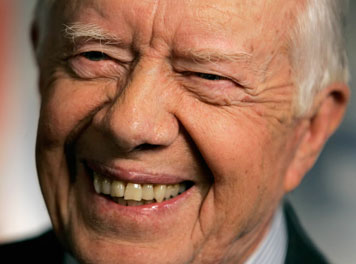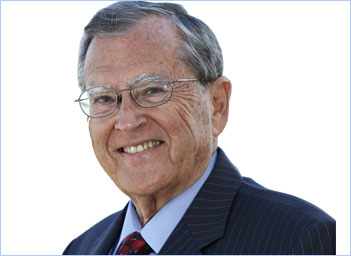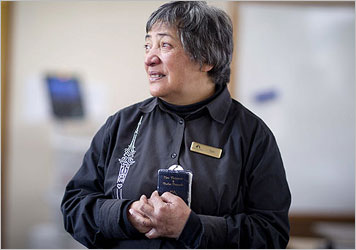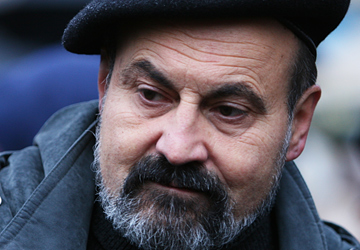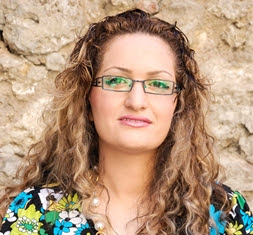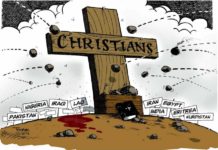 AS an eighth-grade member of Future Farmers of America, Jimmy Carter honed his woodworking skills in the school’s shop. For his final project that academic year, the youngster created a scale model of a stately edifice hundreds of miles and a world away from rural Southwest Georgia: the White House.
AS an eighth-grade member of Future Farmers of America, Jimmy Carter honed his woodworking skills in the school’s shop. For his final project that academic year, the youngster created a scale model of a stately edifice hundreds of miles and a world away from rural Southwest Georgia: the White House.
“There was an intimate and almost constant interrelationship between what we were learning in school and what we were doing on the farm,” writes Carter in A Full Life: Reflections at Ninety, to be released July 7 by Simon & Schuster.
Self-sufficiency was the way of life in the farming community of Archery, near Plains, Ga., where Carter’s father, Earl, was farmer, blacksmith, cobbler, forester, carpenter and more. Likewise, young Jimmy dutifully learned the varied ways of rural success.
“I enjoyed a sense of accomplishment and self-satisfaction, knowing that I had done all that was humanly possible, even as a boy, and had left behind me the visible proof of my work,” he wrote, adding: “The pleasure has not faded as the years have passed…”
Carter recalled helping milk eight cows that produced dairy products for the family, with the excess milk, buttermilk, butter and cream becoming sources of revenue. Milk, flavored with either chocolate or vanilla, would be poured into small bottles and sold in area stores as well.
A separator provided desirable pure cream, with the remaining milk — called “blue john” — given to the hogs. That “skim milk,” Carter noted, is all that he and his wife Rosalynn drink now.
Of his father, he said: “Whenever possible I followed him around, and wanted to emulate everything he did.”
Even as a 5-year-old, Carter was entrepreneurial. He’d pull peanuts in the afternoon and bring them home in his wagon. After washing them and soaking them in saltwater overnight, he’d boil them in a large pot the next morning and put them in paper bags to be sold in Plains.
At a nickel a bag he could make a dollar a day, the same as a skilled farm laborer. Wise savings and investments led Carter to own rental houses that he maintained himself — until leaving home at age 16.
From his mother Lillian, however, he learned different lessons: “Even when I was a child, my mother was known within our community for her refusal to accept any restraints on her treatment of black citizens as equal.”
Except for one railroad worker, the Carters were the only white family in Archery, a rural community of about 200. So Jimmy’s neighbors and playmates were all African Americans.
He had a particularly close relationship with Rachel Clark, an African-American woman with whom he’d work the fields. He recalled the times “she would take me fishing with her in the nearby creeks, and during those excursions she gave me gentle lectures about wildlife and my proper relationship with God and with other people.”
Carter reflects on his experiences related to race — including “the unearned deference” his black friends showed him as a 14-year-old. The profound impact of that experience led Carter to pen “The Pasture Gate,” that is included among other poetry in the book. It concluded, “A silent line was drawn between friend and friend, race and race.”
With equal emotion and detail, Carter recalls his college years, his marriage to hometown-girl Rosalynn Smith, and a Navy career that took him to battleships, submarines and near-death experiences.
“I realized how fragile was my existence, and how fallible were even the most dedicated and experienced seamen.”
His two-hour interview with Captain Hyman Rickover, who oversaw a secret nuclear submarine program, revealed the wide knowledge Carter had obtained through reading and experience. He was asked about Shakespeare, Hemingway, Faulkner, classical music and more — all with which Carter was acquainted.
“Rickover leaned forward and asked, ‘What’s your favorite opera?’ I blurted out, ‘Wagner’s Tristan und Isolde,’ and he asked, ‘Which movement do you prefer?’ Fortunately, I was able to name the ending, known as ‘Liebestod,’ or ‘love death.’ I was thankful that my roommate and I had known this music and played it often at Annapolis.”
Rickover got Carter to confess that even at 59th in a class of 820 at the Naval Academy, he had not always done his very best. Answering that question honestly, Carter believes, is what gained Rickover’s approval.
Often Carter’s life is told as simply a farmer who became president. But much happened between his early roots and the presidency. And much has happened since he and Rosalynn left the White House in defeat in 1981.
Still sharp of mind and wit, Carter reflects on the many and varied experiences throughout his nine decades of earthly experience — including the challenges he has addressed politically and privately to improve the quality of life for people around the globe.
In what could be called a reflective biography, Carter’s Baptist-bred passion for justice, equality and peace seems stronger than ever. And, not surprising, he dedicates this latest in a long string of books to his wife Rosalynn — “who has kept my life full of love.”
“The life we have now is the best of all,” he concludes. “We have an expanding and harmonious family, a rich life in our church and the Plains community, and a diversity of projects at The Carter Center that is adventurous and exciting.” John Pierce in Baptists Today



